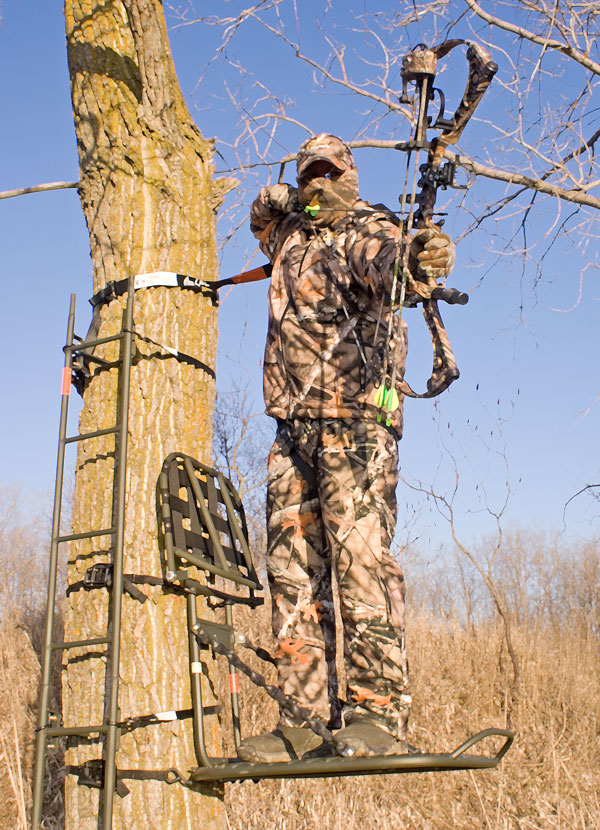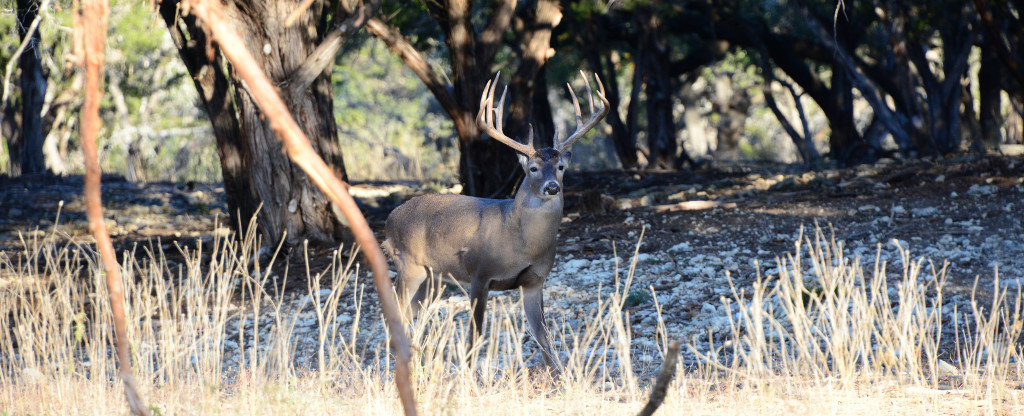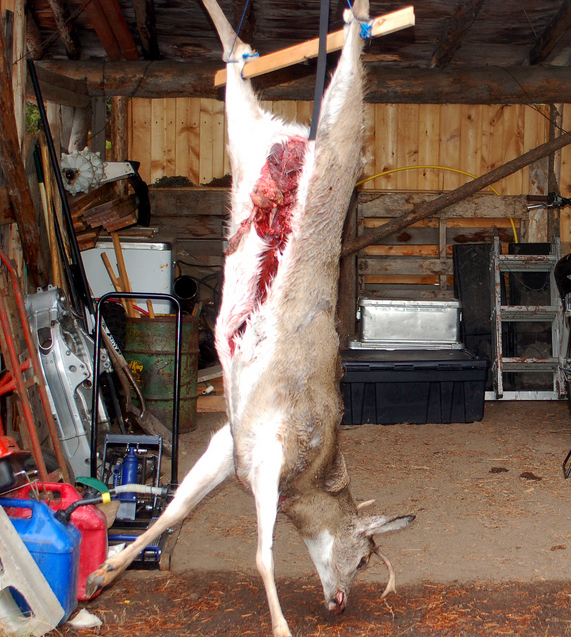There are some really great reasons to use a tree stand during a hunt, but not all stands are designed for the same situations. I am going to cover the basic types and their best placement and location. These devices are great because they give you a view from 15 to 30 feet off the ground. The elevation also provides the hunter some scent protection, as well as a clearer shooting path. In some cases like bear hunting, that is a great place to be when your 600lb bruin comes ambling into range. I’m going to do an article next week on a few different kinds I have tried along with the pros and cons. Before I get into the different types, let’s cover why you would choose to hunt from a stand.

As some readers know, I grew up hunting in Oregon but now live in North Carolina. There is a stark difference in Eastern and Western hunting strategies. Using a stand out West is not going to be easy if you are a public land hunter, but I have an awesome solution for you, so “hang” in there. I know spot and stalk is the preferred and more respected strategy, but a stand does not make that impossible.
Using one in the Eastern US is much more reliable, as the deer have predictable trails that they use frequently, often daily. I had no less than a group of five bucks bedding in a very concealed but sunny patch fifty yards behind my house this fall. I thought there was one rack I could see, but all of a sudden a few forks and a big wide 10 point went flying down the hill towards the creek while I stood there with my mouth ajar.
Scent Control
Basically, the higher you are, the harder it is for your scent to become prominent in an area you are hunting. You still want to hunt the wind, but your particles aren’t going to be layering the forest floor in the same density as if you were in one spot on the ground.
Thermals are key here too. In the morning you will always have better scent control in a stand. When the thermals rise with the dawn, your scent is pushed up and out of the woods. This is why a forest smells cleaner in the morning than the afternoon. In the afternoon, the air is getting colder and pushing particles to the ground. So if you are in a tree stand in the evening, your scent is being driven underneath you, and wherever the wind is headed.
Scent control is a divisive topic with people on both sides. Some say it’s a waste of money, others say it’s the difference between a big buck and a mediocre buck. I say that anytime a deer gets a whiff of you, less is better, even if it’s 10% less. A big mossy horn that’s five years or older is going to agree with me – he does not want to smell you in even the smallest quantities once he knows season is open.
One thing most hunters should know about deer is the time they choose to move. It may be their intelligence or it may be instinct, but deer movement coincides with thermal changes. This means in the evening the wind will often seem perfect, then right at dusk thermals will drop your scent and the wind will switch directions. It’s good to know what is common in the spot you place your stand.
Visual Advantage
In early fall there is a huge difference when looking around from 20 feet up as opposed to being stuck in the foliage. Even if this doesn’t increase the distance of your shot, it increases the preparation time you have when game approaches. If you can see a rack headed your way ten minutes sooner than you would on the ground, I’d say that’s better for heart rate, trigger prep, warming your finger, and so on.
When you elevate yourself beyond the range of any of their natural predators, you are off their radar almost completely. I have video from my stands with does and bucks oblivious to my presence, even though they are eating leaves two feet from my tree. A buddy of mine had a 6 point decide to take a nap under his at 10am one morning. Neither of them had a clue until he looked down to check the time and there was a buck at his trunk, eyes closed, feeling nice and safe.
Proximity
 As I just mentioned, deer will likely never know you were there if you decide to use the right stand in the right place. One of the best places is a few yards off of a main trail or creek crossing. Another good spot is a funnel where they are forced to pick a specific route because of water, terrain or man-made obstacles. These are areas where any of the old does or bucks would bust you on the ground. They may still wind you and bust you depending on thermals, but they won’t see you if you picked a good spot.
As I just mentioned, deer will likely never know you were there if you decide to use the right stand in the right place. One of the best places is a few yards off of a main trail or creek crossing. Another good spot is a funnel where they are forced to pick a specific route because of water, terrain or man-made obstacles. These are areas where any of the old does or bucks would bust you on the ground. They may still wind you and bust you depending on thermals, but they won’t see you if you picked a good spot.
Due to this proximity, 80% of my bow shots from a tree stand occur at 15 to 35 yards. That’s close, and with a bow that’s right where you want to be for total confidence. I’m also given the sight advantage as I watch and listen for my game to finish its run and expire. Half of my deer I shot in 2014 fell within sight of me, and this wouldn’t have been true if I were on the ground.
Sound
Sound is a bad thing while hunting, but when you are in a stand it seems that you can make a few more errors. The first buck I missed this fall was during bow season. I had gotten to my ladder stand about thirty minutes later than planned. The sky was even a little orange, which is not good if you are climbing up a metal stand. No morning did it sound more metallic than this one.
I was in a race with the sunrise and moving quickly I scuffed my toe twice, clang, clang. Then I smacked my hip pack into the rest coming over the top. I pulled up my bow and it hit the ladder with a clatter. I recall saying out loud, “I might as well call it a day at this rate.” Of course I wasn’t getting down during the pre-rut, and I had seen visible activity the last few days. Granted, pre-rut is a large reason this story even happened.
Well two minutes after I settled in, along comes a dandy six point buck, but only about two and a half years old. He was intent on getting somewhere, and moving from my left to my right at a good clip. He had to have heard me, half the county heard me get into my stand that morning. I’m surprised no one texted me “Hey thanks, keep spookin’ em my way.”
He stopped twice and looked all around with his head low. Eventually he walked right into a little shooting lane I had cut and stood there for me, as still as a 3D target. Shaken from a classless entry and a buck two minutes after settling in, I lost the ability to compose myself. I shot and missed under his belly, but he just stood there, looked around, and slowly walked into the thicket before I could reload. I have shot my 30.06, dropped a buck, and then filled my second tag ten minutes later. They just don’t know you are there in a stand.
Now that we covered why someone would use a stand to improve their odds of dropping some meat, let’s look at the three main types used today.
Ladder Stands

The name says it all. You get into this stand via a ladder that attaches to an upper platform with a seat and shooting rest. The ladder is usually three feet from the tree with the top platform strapped and anchored to the trunk. They are a lot of work to put up, and not something you are going to want to take down very often. Usually two people are needed to attach this to a tree.
That said, these are the most comfortable of the stands. They are solid, have a platform with ample room, and are easy to get in and out of. Even though they are easy, ladder stands cause the highest number of falls, and it’s right as you head over the very top so be careful up there.
This is a great choice for a fixed location you will hunt repeatedly. They are well-suited for private property, and some can remain up for two years before being taken down for maintenance. Some of them are designed for two people, and make a great father-son or husband-wife opportunity. I have mine placed mid-slope, above a creek, with a funnel the deer travel through. This stand has dropped seven deer in the last two years, so good placement can make these lethal.
Lock-On Stands
Lock-Ons consist of several parts, and there are many options for ascent. These are great for spots you know will produce later in the year, but will set up ahead of time or the day before. They are notorious for getting people into wonky trees with good cover from hanging on a large old trunk. The stand itself is a chair with a foot platform, several straps to secure it to the tree, and cleats to dig into the bark. Most hunters will install screw-steps, or strap on climbing sticks as they go up the tree. These are the most versatile when it comes to tree selection, there are few locations you can’t affix these to.
It involves a few steps and then pulling the stand up behind you and hanging it on the tree. This is the part that bugs me, I don’t like hanging there messing with stuff twenty or thirty feet off the ground. Your best bet is to get a pulley to make it easy to bring up. These are my least favorite, but others will use nothing else, and you can put them on just about any tree.
The Lock-On stands offer hunters a lot of options and a lot of brands. Some are open or with rests, some are just a simple perch, and others are flamboyant affairs with cup holders. I’ll wait for the heated seat version myself.
Climbing Stands
This is my go-to stand. It is light, packable, simple, and quick. This is the one for the public land hunter. A climbing stand is strapped to the base of the tree using a seat portion and separate bottom foot rest. You then climb the tree like a utility lineman. No ladders, sticks or other footholds needed, just two pieces that pack easily on your back.
Once attached, you slip your feet into the bottom platform, and sit on the top portion while facing the tree. On the top and bottom pieces, there are straps that go around the tree at an angle, and a cleat below that to dig into the tree on your side. Picture a logger climbing a pole with foot cleats and a leather hip strap and you have the idea. Then you raise the top, sit on a bar, raise the bottom, then raise the top again. Repeat until you are about twenty feet up a tree.
Here is a video for the lone-wolf climber that I use:
This is the Ferrari of tree stands in my humble opinion. My preferred method is to walk until I find what I think is thick buck sign, and set-up right then and there, coming back the next morning if needed. I can walk miles with one on my back and hang it in any part of the woods in a flash. I do not need to take the time a ladder stand or lock-on requires in setting up the footings. When I get to the top of my tree, I simply turn around and sit down. I don’t have to secure anything else regarding the stand, I’m already in it. And for someone with a bit of vertigo, this actually feels safer to me than the lock-on. It always comes down to getting off the rungs and into the seat with those and the ladder stands. When people start to come off the ladders or climbing sticks, they increase the odds of a fall.
The downside to these is tree choice. They are confined to a specific diameter, but it’s usually adequate. They are only used on relatively straight, branchless trees. If you don’t have many of those, this is not the stand for you. It’s not that you can’t find that tree where you hunt. It’s how far it is, or how much cover it’s in that can make it perfect for the stand, but not the deer you’re targeting.
I admit that as much as I love these, I have cursed them for not being able to get me in the “perfect tree”. A lock-on typically solves that, but I can’t stand lugging the equipment around for those, much less the set-up process. I’m sure if I practiced I’d be fast, but that’s my point. I have enough hunting skills to practice. The climbing stands get me in close enough without taking much effort.
Next Week
Next week I’ll go into a bit more detail about the three types I mention here. I’ll give some tips on what to avoid and what to look out for when choosing, placing, and using a stand.
Images Courtesy of: FurrowOutdoors, Basspro, GalleryHip and Torch Magazine



